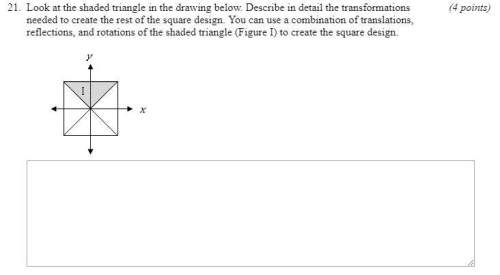
Mathematics, 24.04.2020 23:04 josmanu235
In a study of DDT poisoning, researchers fed several rats a measured amount of DDT. They then made measurements on the rats' nervous systems that might explain how DDT poisoning causes tremors. One important variable was the "absolutely refractory period," the time required for a nerve to recover after a stimulus. This response varies normally. Measurements on four rats gave the following data in milliseconds:
1.3, 1.4, 1.5, 1.6
Suppose that the mean "absolutely refractory period" for unpoisoned rats is known to be 1.3 milliseconds. DDT poisoning should slow nerve recovery and so increase this period.
Do the data give good evidence for this supposition?
Carry out the appropriate test. Giving the P-value, and then interpret the result in the plain language of the context.

Answers: 3


Other questions on the subject: Mathematics


Mathematics, 21.06.2019 22:00, MoparorNocar061401
Find two numbers if their sum is 91 and the ratio is 6: 7?
Answers: 1

Mathematics, 21.06.2019 22:50, sarbjit879
Which linear inequality is represented by the graph?
Answers: 1

Mathematics, 21.06.2019 23:00, janeou17xn
Mike wants to make meatloaf. his recipe uses a total of 8 pounds of meat. if he uses a 3 to 1 ratio of beef to pork, how much pork will he use? enter your answer as a mixed number in simplest terms.
Answers: 1
You know the right answer?
In a study of DDT poisoning, researchers fed several rats a measured amount of DDT. They then made m...
Questions in other subjects:


English, 08.10.2019 08:50

History, 08.10.2019 08:50

History, 08.10.2019 08:50

English, 08.10.2019 08:50


History, 08.10.2019 08:50







